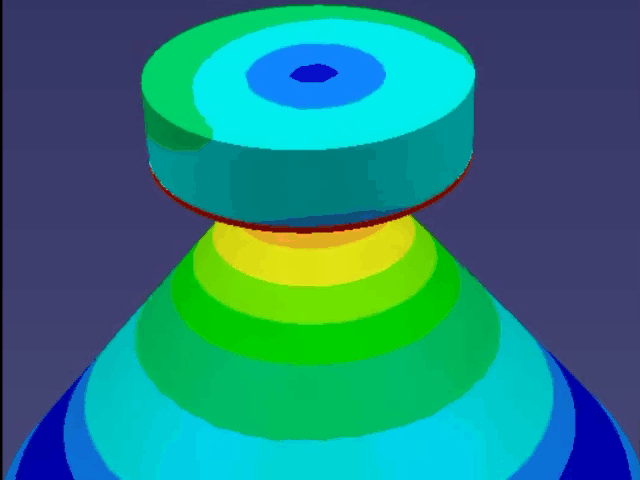 |
共有21599人关注过本帖树形打印复制链接主题:喇叭的相位失真问题 |
|---|
 eagles |
小大 1楼 | QQ | 信息 | 搜索 | 邮箱 | 主页 | UC | |
  加好友 加好友  发短信 发短信

等级:新手上路 帖子:82 积分:2184 威望:0 精华:0 注册:2006-1-10 20:08:50 |
喇叭的相位失真问题  Post By:2006-2-7 14:38:45 [只看该作者] Post By:2006-2-7 14:38:45 [只看该作者]
|
|
 Don't just do it ,Just do it right! |
||

|
 me |
小大 2楼 | 信息 | 搜索 | 邮箱 | 主页 | UC | |
  加好友 加好友  发短信 发短信

等级:新手上路 帖子:44 积分:416 威望:0 精华:0 注册:2005-11-30 18:58:33 |
 Post By:2006-2-7 15:32:36 [只看该作者] Post By:2006-2-7 15:32:36 [只看该作者]
|
|

|
 COLIN5 |
小大 3楼 | QQ | 信息 | 搜索 | 邮箱 | 主页 | UC | |
  加好友 加好友  发短信 发短信

等级:职业侠客 帖子:150 积分:2366 威望:0 精华:0 注册:2006-1-20 14:00:36 |
 Post By:2006-2-7 16:07:14 [只看该作者] Post By:2006-2-7 16:07:14 [只看该作者]
|
|

|
 me |
小大 4楼 | 信息 | 搜索 | 邮箱 | 主页 | UC | |
  加好友 加好友  发短信 发短信

等级:新手上路 帖子:44 积分:416 威望:0 精华:0 注册:2005-11-30 18:58:33 |
 Post By:2006-2-7 17:05:10 [只看该作者] Post By:2006-2-7 17:05:10 [只看该作者]
|
|

|
 COLIN5 |
小大 5楼 | QQ | 信息 | 搜索 | 邮箱 | 主页 | UC | |
  加好友 加好友  发短信 发短信

等级:职业侠客 帖子:150 积分:2366 威望:0 精华:0 注册:2006-1-20 14:00:36 |
 Post By:2006-2-7 17:19:30 [只看该作者] Post By:2006-2-7 17:19:30 [只看该作者]
|
|

|
 me |
小大 6楼 | 信息 | 搜索 | 邮箱 | 主页 | UC | |
  加好友 加好友  发短信 发短信

等级:新手上路 帖子:44 积分:416 威望:0 精华:0 注册:2005-11-30 18:58:33 |
 Post By:2006-2-7 17:21:12 [只看该作者] Post By:2006-2-7 17:21:12 [只看该作者]
|
|

|
 me |
小大 7楼 | 信息 | 搜索 | 邮箱 | 主页 | UC | |
  加好友 加好友  发短信 发短信

等级:新手上路 帖子:44 积分:416 威望:0 精华:0 注册:2005-11-30 18:58:33 |
 Post By:2006-2-7 17:46:31 [只看该作者] Post By:2006-2-7 17:46:31 [只看该作者]
|
|

|
 音响初哥 |
小大 8楼 | 信息 | 搜索 | 邮箱 | 主页 | UC | |
 加好友 加好友  发短信 发短信
 东厂仅一位
东厂仅一位
等级:超级版主 帖子:2753 积分:21824 威望:10 精华:20 注册:2005-10-31 11:19:00 |
 Post By:2006-2-7 23:02:58 [只看该作者] Post By:2006-2-7 23:02:58 [只看该作者]
|
|
 设计及承建消声室/试听室;提供专业隔声门/吸声尖劈 mobile:13632682797 qq:93514358 |
||

|
 eagles |
小大 9楼 | QQ | 信息 | 搜索 | 邮箱 | 主页 | UC | |
  加好友 加好友  发短信 发短信

等级:新手上路 帖子:82 积分:2184 威望:0 精华:0 注册:2006-1-10 20:08:50 |
 Post By:2006-2-8 8:21:01 [只看该作者] Post By:2006-2-8 8:21:01 [只看该作者]
|
|
 Don't just do it ,Just do it right! |
||

|
 COLIN5 |
小大 10楼 | QQ | 信息 | 搜索 | 邮箱 | 主页 | UC | |
  加好友 加好友  发短信 发短信

等级:职业侠客 帖子:150 积分:2366 威望:0 精华:0 注册:2006-1-20 14:00:36 |
 Post By:2006-2-8 17:26:52 [只看该作者] Post By:2006-2-8 17:26:52 [只看该作者]
|
|

|
 liyy |
小大 11楼 | 信息 | 搜索 | 邮箱 | 主页 | UC | |
 加好友 加好友  发短信 发短信

等级:新手上路 帖子:521 积分:4332 威望:0 精华:1 注册:2005-11-2 14:44:07 |
 Post By:2006-2-8 20:21:18 [只看该作者] Post By:2006-2-8 20:21:18 [只看该作者]
|
|

|
 imxp |
小大 12楼 | 信息 | 搜索 | 邮箱 | 主页 | UC | |
  加好友 加好友  发短信 发短信
 野兔新任书记员
野兔新任书记员
等级:版主 帖子:809 积分:14423 威望:2 精华:10 注册:2005-11-6 0:00:34 |
 Post By:2006-2-8 20:55:00 [只看该作者] Post By:2006-2-8 20:55:00 [只看该作者]
|
|
 你在楼上拍板砖,拍板砖人在楼下拍你。 |
||

|
 imxp |
小大 13楼 | 信息 | 搜索 | 邮箱 | 主页 | UC | |
  加好友 加好友  发短信 发短信
 野兔新任书记员
野兔新任书记员
等级:版主 帖子:809 积分:14423 威望:2 精华:10 注册:2005-11-6 0:00:34 |
 Post By:2006-2-8 20:59:12 [只看该作者] Post By:2006-2-8 20:59:12 [只看该作者]
|
|
 你在楼上拍板砖,拍板砖人在楼下拍你。 |
||

|
 liyy |
小大 14楼 | 信息 | 搜索 | 邮箱 | 主页 | UC | |
 加好友 加好友  发短信 发短信

等级:新手上路 帖子:521 积分:4332 威望:0 精华:1 注册:2005-11-2 14:44:07 |
 Post By:2006-2-8 21:44:44 [只看该作者] Post By:2006-2-8 21:44:44 [只看该作者]
|
|

|
 imxp |
小大 15楼 | 信息 | 搜索 | 邮箱 | 主页 | UC | |
  加好友 加好友  发短信 发短信
 野兔新任书记员
野兔新任书记员
等级:版主 帖子:809 积分:14423 威望:2 精华:10 注册:2005-11-6 0:00:34 |
 Post By:2006-2-8 23:56:02 [只看该作者] Post By:2006-2-8 23:56:02 [只看该作者]
|
|
 你在楼上拍板砖,拍板砖人在楼下拍你。 |
||

|
 一个老兵 |
小大 16楼 | 信息 | 搜索 | 邮箱 | 主页 | UC | |
 加好友 加好友  发短信 发短信

等级:新手上路 帖子:3518 积分:31704 威望:5 精华:20 注册:2005-10-31 11:40:50 |
 Post By:2006-2-9 5:19:14 [只看该作者] Post By:2006-2-9 5:19:14 [只看该作者]
|
|

|
 一个老兵 |
小大 17楼 | 信息 | 搜索 | 邮箱 | 主页 | UC | |
 加好友 加好友  发短信 发短信

等级:新手上路 帖子:3518 积分:31704 威望:5 精华:20 注册:2005-10-31 11:40:50 |
 Post By:2006-2-9 5:25:15 [只看该作者] Post By:2006-2-9 5:25:15 [只看该作者]
|
|

|
 一个老兵 |
小大 18楼 | 信息 | 搜索 | 邮箱 | 主页 | UC | |
 加好友 加好友  发短信 发短信

等级:新手上路 帖子:3518 积分:31704 威望:5 精华:20 注册:2005-10-31 11:40:50 |
 Post By:2006-2-9 5:37:08 [只看该作者] Post By:2006-2-9 5:37:08 [只看该作者]
|
|

|
 me |
小大 19楼 | 信息 | 搜索 | 邮箱 | 主页 | UC | |
  加好友 加好友  发短信 发短信

等级:新手上路 帖子:44 积分:416 威望:0 精华:0 注册:2005-11-30 18:58:33 |
 Post By:2006-2-9 9:30:24 [只看该作者] Post By:2006-2-9 9:30:24 [只看该作者]
|
|

|
 音响初哥 |
小大 20楼 | 信息 | 搜索 | 邮箱 | 主页 | UC | |
 加好友 加好友  发短信 发短信
 东厂仅一位
东厂仅一位
等级:超级版主 帖子:2753 积分:21824 威望:10 精华:20 注册:2005-10-31 11:19:00 |
 Post By:2006-2-18 23:54:16 [只看该作者] Post By:2006-2-18 23:54:16 [只看该作者]
|
|
 设计及承建消声室/试听室;提供专业隔声门/吸声尖劈 mobile:13632682797 qq:93514358 |
||

|